Long Term Test: BIONICON Edison EVO 2015 Final Review
The first thing you think of when you hear BIONICON has to be their dual crown forks and their pretty outstanding geometry adjustment system. Bracing itself for the long-term test is the Edison EVO, a bike that also features this very same ability to alter its geometry. But how does it perform in reality and does it follow through on its promises? Here’s where to find out.
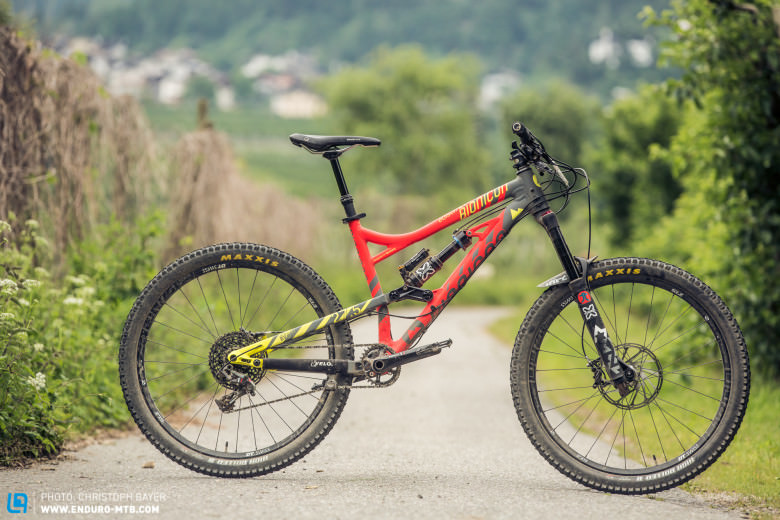
Back on 26 May 2015 test rider Andreas went directly to BIONICON’s headquarters on the Tegernsee in Southern Germany, where he submitted his First Look perspective on the BIONICON Edison EVO. In its downhill mode, the bike’s geometry is close to many modern enduro bikes, with a slack 65.5° head angle and a steep 74.5° seat angle. It’s the reach where the game changes, as its 403 mm reach (medium size) is on the short side, and together with its 50 mm stem you’re confronted with a pretty upright riding position and direct handling. At 178 cm tall, Andi declares the bike fits like a glove, but we reckon others might opt for the large frame – although it’s all a matter of taste.
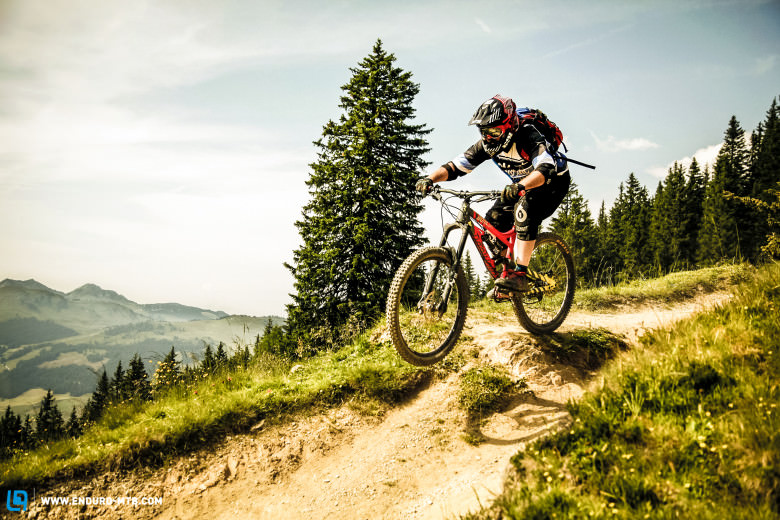
The suspension
Set some time aside to set up the suspension; both the forks and the rear shock has external adjustment for the rebound as well as high and low-speed compression damping. The X-Fusion fork also features BIONICON’s own 2×2 BIONICON Air Cartridge, which is kitted out with two separate positive (and 2 correspondingly negative) air chambers intended to enable intricate fine-tuning of the spring curve. The rear shock even allows adjustment of the end progression. But while all these options sound like luxury in theory, it just means more variables, more time spent dialing, debating and dallying. Suits the style of some riders, but Andi would have preferred a solid ballpark set-up for the suspension and then the option of fine-tuning while riding.
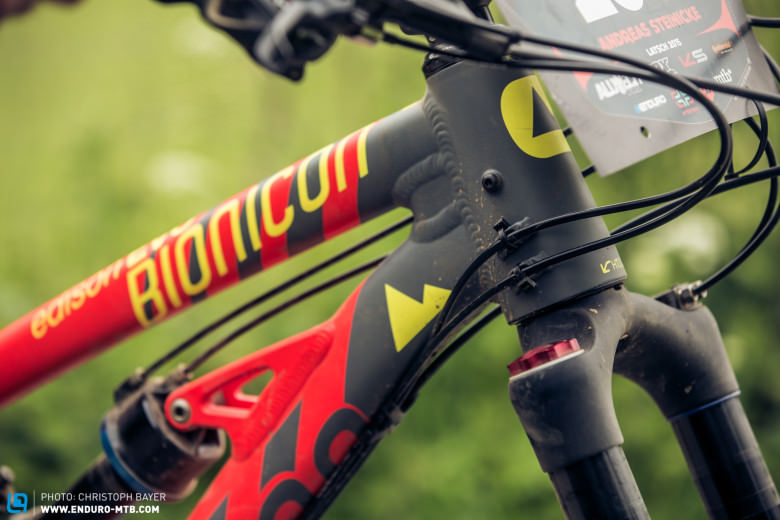
Our test bike was kitted out with a new X-Fusion Metric fork with black stanchions. The black coating is designed to provide a more responsive ride as well as adding to the lifespan of the forks. After four months the fork has definitely been ridden in, and it is still responsive and remarkably reliant at all times. But while they’re smooth and plush to ride, they could offer a little more feedback. Meanwhile the 75 kg Andi finally found his ideal set-up for the X-Fusion Vector Air HLR Blackline rear shock, settling on 40% sag as he likes a softer shock while still making sure it’s supportive in the mid-stroke. The end progression is satisfying, and effectively prevents harsh bottom outs. The rear is planted and plush, even on the most technical descents but could also give the rider more feedback, as it sometimes feels a bit dead and can bog down in compressions.
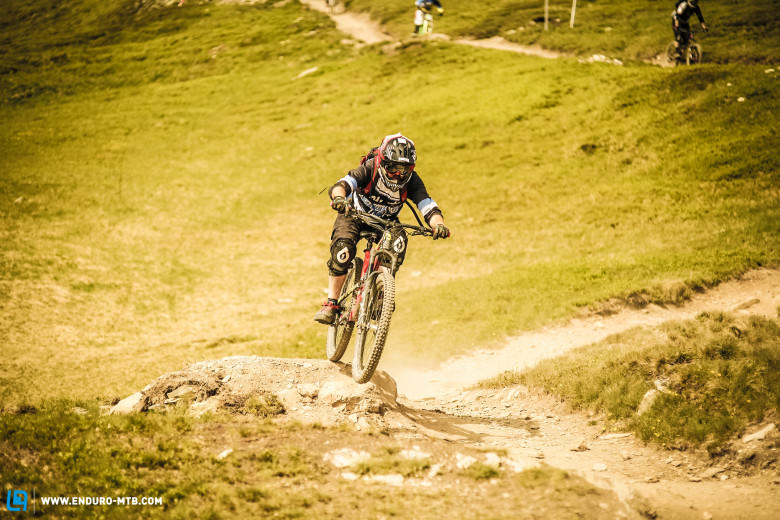
The BIONICON system
Trying to take on steep gradients without employing the efforts of the BIONICON system will see you struggling to keep the front planted. But does it matter? This bike’s standout features is its small remote B-Switch on the left underside of the bars, which is linked to both the X-Fusion Metric fork as well as the X-Fusion Vector rear shock – at the cost of a tidy, cable-clean front end if we’re being honest. Hold down the switch with your weight forwards and the fork height drops as an extra piston at the shock mount emerges and you’ll spin up the hills. Given the corresponding geometry alterations (with the rocker arm flattening), any bobbing at the rear is eliminated as the SAG is also reduced so the bike turns into a veritable climbing machine, with efficiency and comfort at the core.
With infinite geometry adjustment, the head and seat angles can be steepened by up to 5°, resulting in a very upright riding position that Andi said his back thanked him for. But too much off a drop wasn’t welcome, and gave Andi the impression of riding into the mountain, rather than along the track. Even though the 13.5 kg bike is far from light, with no carbon in sight, it’s definitely capable of getting up the steepest, most unforgiving gradients – largely thanks to the geometry adjustment.
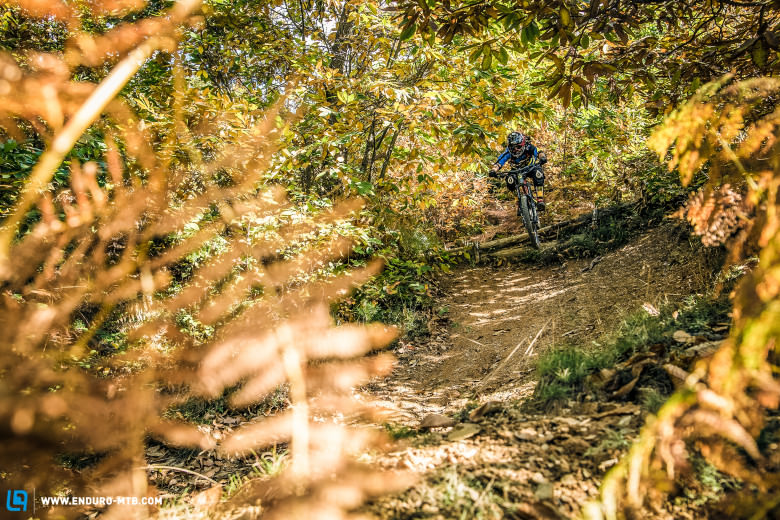
With the climb now over, press the lever and pull your weight backwards to set the Edison EVO into the downhill mode. Offering no shortage of confidence on the descents, the EVO may be a long way from being a race bike but it does handle superbly with a decent dose of agility and generosity.
The Edison EVO on long-term test
After racing the Trail Trophy in Latsch, the Edison EVO accompanied Andi on a circuit denoted by his Triberg Bike Reisen travel company. A lengthy road trip saw him and the BIONICON reach Saalbach Hinterglemm before Alpes D’Huez for the Megavalanche 2015. Andi declared the Edison EVO a stellar bike for the bike park trails in Saalbach on everything from the X-Line, Hackelberg, Z-Line and Milka Line. As such a confidence-inspiring ride, it spurred Andi to push his own boundaries and even kept its cool as Andi pushed the pace on the X-Line’s key sections. Some riders would perhaps prefer a longer main frame here, but Andi’s still convinced by the BIONICON’s super agile and compliant suspension. Although he claims it lacked a little feedback and showed a tendency to sink a little too deep on berms and jumps, which are obviously pretty key for bike parks.
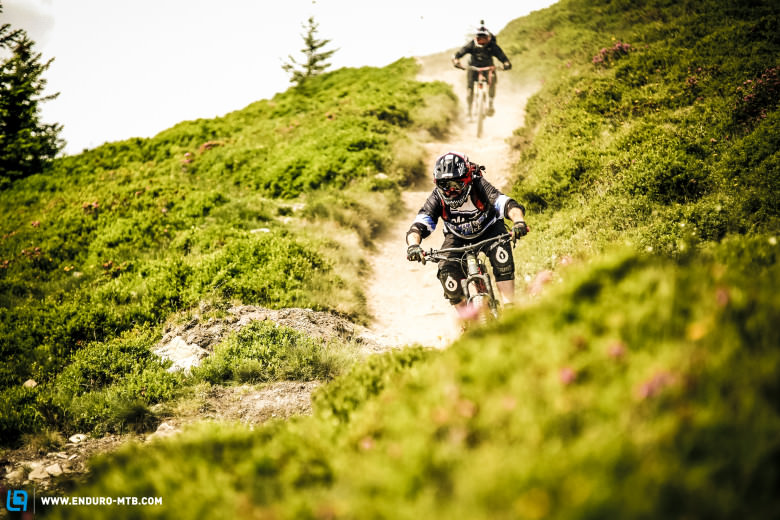
For the Megavalanche race in Alpes D’Huez Andi decided it was time to mount the Schwalbe Magic Mary tubeless for both front and back to make sure he had enough traction for the notorious 32 km descent. And the tyre choice paid off – particularly on the top part of the glacier and the scree fields. In the same line of approval, the bike kept settled at speed and on the technical sections. So while Andi tired near the latter part of the race, he was able to rely on the comfort of the bike and its buttery plush suspension.
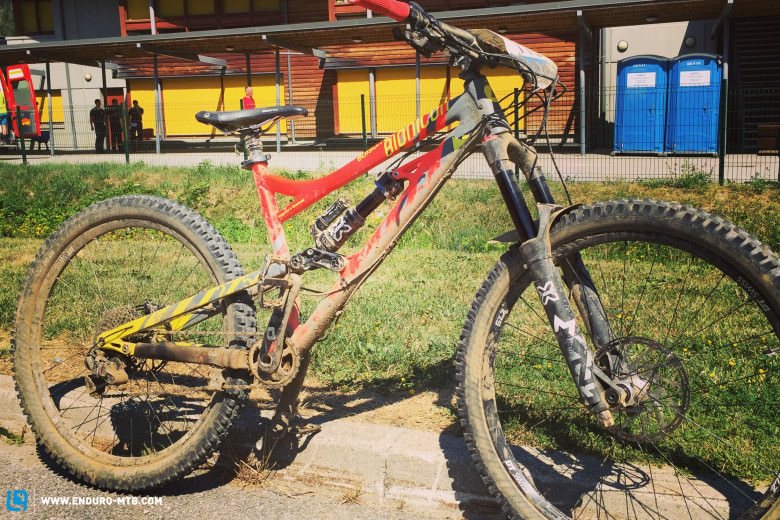
Wear and tear
The bike unfortunately left France with some battle scars courtesy of the race’s trail debris, with the finish on the bottom bracket area betraying every kilometer of the 32 km race. But fortunately, a few scratches here and there have no impact on how the bike functions. It’s interesting to note that Andi wasn’t satisfied with the braking power of the SRAM Guide brakes, and he mounted a 200 mm disc at the rear. After 1,600 km, SRAM’s 11x chain has also been replaced. When it comes to grips – a very personal choice – Andi bid farewell to the Ergon GE1 grips in favour of the same brand’s GA1 grips.
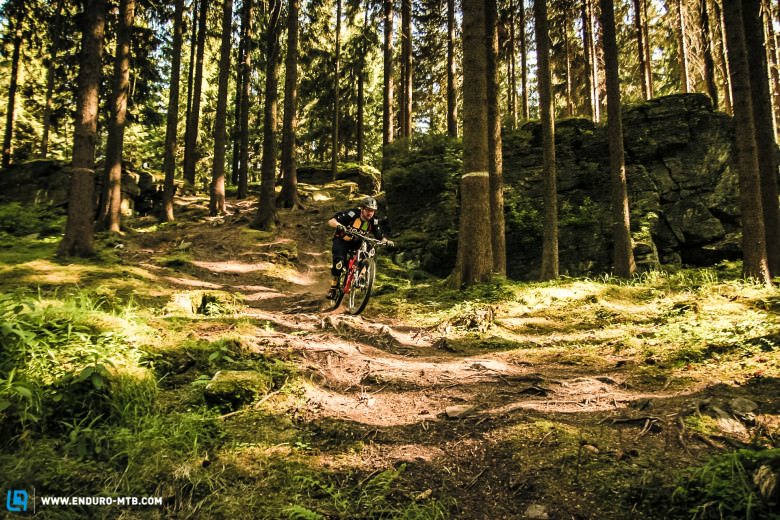
Conclusion
The BIONICON Edison EVO has left Andi wholly convinced of its capabilities. Alongside its masses of confidence, this plush bike also has an agile handling package and active and comfortable suspension to ensure that a grin is never far from his face. If you’re looking for a more direct and precise bike that constantly informs you of the terrain and prompts you to whip out some fun maneuvers, then the BIONICON Edison EVO might not be able to deliver the complete package.
For more info on the BIONICON Edison EVO head to evo.bionicon.com.
Words: Andreas Steinicke Photos: Andreas Steinicke, Christoph Bayer
Did you enjoy this article? If so, we would be stoked if you decide to support us with a monthly contribution. By becoming a supporter of ENDURO, you will help secure a sustainable future for high-quality mountain bike journalism. Click here to learn more.








